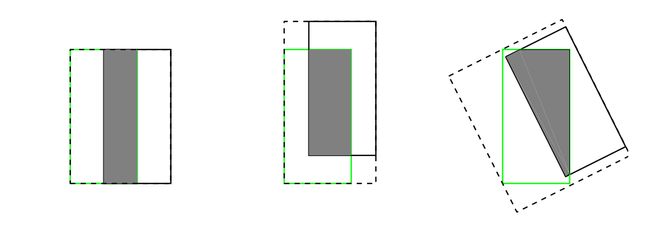损失函数统计
L1 Loss
最常看到的MAE也是指L1 Loss损失函数。 它是把目标值 与模型输出(估计值) 做绝对值得到的误差。由于神经网络通常是解决复杂问题,所以很少使用。
loss ( x , y ) = 1 n ∑ i = 1 n ∣ y i − f ( x i ) ∣ \operatorname{loss}(x, y)=\frac{1}{n} \sum_{i=1}^{n}\left|y_{i}-f\left(x_{i}\right)\right| loss(x,y)=n1i=1∑n∣yi−f(xi)∣
L2 Loss
最常看到的MSE也是指L2 Loss损失函数,PyTorch中将其命名为torch.nn.MSELoss。它是把目标值 与模型输出(估计值) 做差然后平方得到的误差。
loss ( x , y ) = 1 n ∑ i = 1 n ( y i − f ( x i ) ) 2 \operatorname{loss}(x, y)=\frac{1}{n} \sum_{i=1}^{n}\left(y_{i}-f\left(x_{i}\right)\right)^{2} loss(x,y)=n1i=1∑n(yi−f(xi))2
Smooth L1 Loss
l n = { 0.5 ∗ ( x n − y n ) 2 / beta , if ∣ x n − y n ∣ < beta ∣ x n − y n ∣ − 0.5 ∗ beta, otherwise l_{n}= \begin{cases}0.5 * \left(x_{n}-y_{n}\right)^{2} / \text { beta }, & \text { if }\left|x_{n}-y_{n}\right|<\text { beta } \\ \left|x_{n}-y_{n}\right|-0.5 * \text { beta, } & \text { otherwise }\end{cases} ln={0.5∗(xn−yn)2/ beta ,∣xn−yn∣−0.5∗ beta, if ∣xn−yn∣< beta otherwise
torch.nn.SmoothL1Loss()
我们直接看那个loss计算公式 ,可以发现,是一个分段函数,我们将绝对值差视为一个变量z,那么这个变量是大于0的,即分段函数只在大于等于0处有定义,有图像。我们再来看看分段点,就是beta。
有意思的是,在分段函数和这个分段点有关,在第一个公式(左边分段函数)中,函数值小于等于0.5z ,因为除了beta。右边分段函数中,大于等于0.5z。所以是连续的,所以叫做Smooth。
而且beta固定下来的时候,当z很大时,损失是线性函数,也就是说损失不会像MSE那样平方倍的爆炸。
NLL Loss
负对数似然损失,主要应用在分类任务中。它先通过logSoftmax(),然后把label对应的输出值拿出来,负号去掉,然后平均。
torch.nn.NLLLoss()
CrossEntropy Loss
交叉熵,实际上它是由nn.LogSoftmax()和nn.NLLLoss()组成。 主要应用在多分类的问题中(二分类也可以用)
torch.nn.CrossEntropyLoss()
BCELoss
BCE Loss就是二分类的交叉熵(它才是严格按照交叉熵的公式去算的,但只针对二分类) BCEloss一般应用在单标签二分类和多标签二分类中。
loss F = − 1 n ∑ ( y n × In x n + ( 1 − y n ) × In ( 1 − x n ) ) \operatorname{loss} F=-\frac{1}{n} \sum\left(y_{n} \times \operatorname{In} x_{n}+\left(1-y_{n}\right) \times \operatorname{In}\left(1-x_{n}\right)\right) lossF=−n1∑(yn×Inxn+(1−yn)×In(1−xn))
一般要先sigmoid再bceloss,也可使用torch.nn.BCEWithLogitsLoss,将Sigmoid层和BCELoss 组合在一个类中,这个版本比使用简单的Sigmoid 后跟BCELoss在数值上更稳定。
Focal Loss
F L = { − α ( 1 − p ) γ log ( p ) , if y = 1 − ( 1 − α ) p γ log ( 1 − p ) , if y = 0 F L= \begin{cases}-\alpha(1-p)^{\gamma} \log (p), & \text { if } y=1 \\ -(1-\alpha) p^{\gamma} \log (1-p), & \text { if } y=0\end{cases} FL={−α(1−p)γlog(p),−(1−α)pγlog(1−p), if y=1 if y=0
import torch
import torch.nn.functional as F
def reduce_loss(loss, reduction):
reduction_enum = F._Reduction.get_enum(reduction)
# none: 0, elementwise_mean:1, sum: 2
if reduction_enum == 0:
return loss
elif reduction_enum == 1:
return loss.mean()
elif reduction_enum == 2:
return loss.sum()
def weight_reduce_loss(loss, weight=None, reduction='mean', avg_factor=None):
if weight is not None:
loss = loss * weight
if avg_factor is None:
loss = reduce_loss(loss, reduction)
else:
# if reduction is mean, then average the loss by avg_factor
if reduction == 'mean':
loss = loss.sum() / avg_factor
# if reduction is 'none', then do nothing, otherwise raise an error
elif reduction != 'none':
raise ValueError('avg_factor can not be used with reduction="sum"')
return loss
def py_sigmoid_focal_loss(pred, target, weight=None, gamma=2.0, alpha=0.25, reduction='mean', avg_factor=None):
# 注意 输入的pred不需要经过sigmoid
pred_sigmoid = pred.sigmoid()
target = target.type_as(pred)
pt = (1 - pred_sigmoid) * target + pred_sigmoid * (1 - target)
focal_weight = (alpha * target + (1 - alpha) *
(1 - target)) * pt.pow(gamma)
# 下面求交叉熵的这个函数 对pred进行了sigmoid
loss = F.binary_cross_entropy_with_logits(
pred, target, reduction='none') * focal_weight
# print(loss)
'''输出
tensor([[0.0394, 0.0506],
[0.3722, 0.0043]])
'''
loss = weight_reduce_loss(loss, weight, reduction, avg_factor)
return loss
IoU Loss
L I o U = 1 − I o U L_{I o U}=1-I o U LIoU=1−IoU
优点:
- IoU作为距离时是一个度量。因为它包含了作为度量的所有属性,比如:非负性,不确定性对称性和三角不等性。
- IoU有尺度不变性,这意味着任意两个方框A和B的相似性与他们的空间尺度的无关。
缺点:
- 如果两个目标没有重叠,IoU将会为0,并且不会反应两个目标之间的距离,在这种无重叠目标的情况下,如果IoU用作于损失函数,梯度为0,无法优化。
- IoU无法区分两个对象之间不同的对齐方式。更确切地讲,不同方向上有相同交叉级别的两个重叠对象的IoU会完全相等。如下图

GIoU Loss
对于任意的两个A、B框,首先找到一个能够包住它们的最小方框C。然后计算C \ (A ∪ B) 的面积与C的面积的比值,注:C \ (A ∪ B) 的面积为C的面积减去A∪B的面积。再用A、B的IoU值减去这个比值得到GIoU。

G I o U = ∣ A ∩ B ∣ ∣ A ∪ B ∣ − ∣ C \ ( A ∪ B ) ∣ ∣ C ∣ = I o U − ∣ C \ ( A ∪ B ) ∣ ∣ C ∣ G I o U=\frac{|A \cap B|}{|A \cup B|}-\frac{|C \backslash(A \cup B)|}{|C|}=I o U-\frac{|C \backslash(A \cup B)|}{|C|} GIoU=∣A∪B∣∣A∩B∣−∣C∣∣C\(A∪B)∣=IoU−∣C∣∣C\(A∪B)∣
L G I o U = 1 − G I o U \mathcal{L}_{G I o U}=1-G I o U LGIoU=1−GIoU
DIoU Loss
L D I o U = 1 − I o U + p 2 ( b , b g t ) c 2 L_{D I o U}=1-I o U+\frac{p^{2}\left(b, b_{g t}\right)}{c^{2}} LDIoU=1−IoU+c2p2(b,bgt)
p 2 ( b , b g t ) c 2 \frac{p^{2}\left(b, b_{g t}\right)}{c^{2}} c2p2(b,bgt)代表了预测框和真实框中心点的直线距离的平方,c代表能够同时包含两个框的最小闭包区域的对角线距离。
CIoU Loss
C I o U = I o U − ρ 2 ( b , b g t ) c 2 − α v CIoU=IoU- \frac{\rho^2(b,b^{gt})}{c^2}- \alpha v CIoU=IoU−c2ρ2(b,bgt)−αv
α = v 1 − I o U + v \alpha=\frac{v}{1-IoU+v} α=1−IoU+vv
v = 4 π 2 ( a r c t a n w g t h g t − a r c t a n w h ) 2 v=\frac{4}{π^2}(arctan\frac{w^{gt}}{h^{gt}}-arctan\frac{w}{h})^2 v=π24(arctanhgtwgt−arctanhw)2
L C I o U = 1 − C I o U L_{CIoU}=1-CIoU LCIoU=1−CIoU
https://zhuanlan.zhihu.com/p/83131026 l1 l2 smoothl1
https://blog.csdn.net/qq_43391414/article/details/121740411 smoothl1
https://www.cnblogs.com/picassooo/p/12600046.html kl 散度和交叉熵
https://zhuanlan.zhihu.com/p/340585479 各种loss
https://blog.csdn.net/weixin_41735859/article/details/89288493 GIoU
https://www.cnblogs.com/xuanyuyt/p/12090694.html iou
https://blog.csdn.net/liangdong2014/article/details/114380202 iou